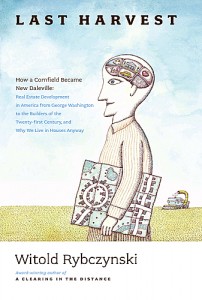
To keep up with emerging ideas, highlight especially important works, and provide diverse views on issues in planning and design, I will be highlighting some of my past and current readings over the next year. To begin, I’d like to feature a pair of books from one of the best authors in architecture and urban studies: Witold Rybczynski. Two of his books contrast the extremes of development: Last Harvest (2007) and City Life (1995). (For now, I will forgo his wonderful biography of Frederick Law Olmsted, A Clearing in the Distance, and his latest, Makeshift Metropolis.)
The subtitle of Last Harvest is a summary of its theme: “How a Cornfield Became New Daleville: Real Estate Development in America from … Continue reading
